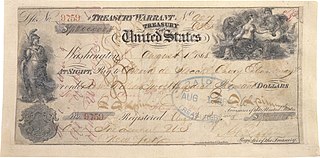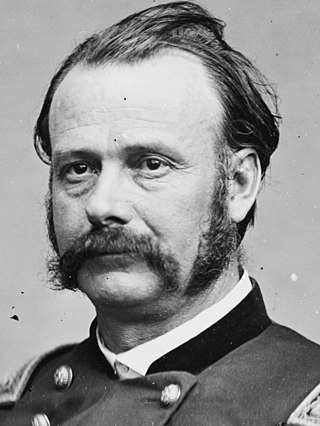
From 1732 to 1867, the Russian Empire laid claim to northern Pacific Coast territories in the Americas. Russian colonial possessions in the Americas are collectively known as Russian America. It consisted mostly of present-day Alaska in the United States, but also included the outpost of Fort Ross in California, and three forts in Hawaii, including Russian Fort Elizabeth. Russian Creole settlements were concentrated in Alaska, including the capital, New Archangel, which is now Sitka.

Sitka is a unified city-borough in the southeast portion of the U.S. state of Alaska. It was under Russian rule from 1799 to 1867. The city is situated on the west side of Baranof Island and the south half of Chichagof Island in the Alexander Archipelago of the Pacific Ocean. As of the 2020 census, Sitka had a population of 8,458, making it the fifth-most populated city in the state.

The Alaska Purchase was the purchase of Alaska from the Russian Empire by the United States for a sum of $7.2 million in 1867. On May 15 of that year, the United States Senate ratified a bilateral treaty that had been signed on March 30, and American sovereignty became legally effective across the territory on October 18.

The Department of Alaska was the designation for the government of Alaska from its purchase by the United States of America in 1867 until its organization as the District of Alaska in 1884. During the department era, Alaska was variously under the jurisdiction of the U.S. Army, the U.S. Dept. of the Treasury, and the U.S. Navy. The area later became the District of Alaska, then the Territory of Alaska, then the State of Alaska.

Seward's Day is a legal holiday in the U.S. state of Alaska. This holiday falls on the last Monday in March and commemorates the signing of the Alaska Purchase treaty on March 30, 1867. It is named for then-Secretary of State William H. Seward, who negotiated the purchase from Russia.

The first USS Ossipee was a wooden, screw sloop-of-war in commission in the United States Navy at various times between 1861 and 1889. She served in the Union Navy during the American Civil War. She was named for the Ossipee River of New Hampshire and Maine. The USS Ossipee was present during the Alaska Purchase.

The Alaska State Capitol is the building that hosts the Alaska Legislature and the offices of the Governor of Alaska and Lieutenant Governor of Alaska. Located in the state's capital, Juneau, the building was opened on February 14, 1931, as a federal building. After Alaska gained statehood in 1959, the building became home to the Alaska Legislature and has retained the function ever since.

The history of Alaska dates back to the Upper Paleolithic period, when foraging groups crossed the Bering land bridge into what is now western Alaska. At the time of European contact by the Russian explorers, the area was populated by Alaska Native groups. The name "Alaska" derives from the Aleut word Alaxsxaq, meaning "mainland".

KCAW is a non-commercial radio station in Sitka, Alaska, on 104.7 FM, which airs public radio programming. It first went on air in 1982.
The Sheet'ká Ḵwáan Naa Kahídi is a performance venue and meeting space modelled after a Tlingit clan house in Sitka, Alaska. Its capacity is 300 people. Some translate the building's name to "The House of the Sitka People." It is also known as the "Community House." It is the home of the largest hand-carved house screen in Southeast Alaska.
Green Lake is a lake/reservoir south of Sitka, Alaska. It is fed by the Vodopad River and outflows into Silver Bay.

USCGC Maple (WLB-207) is a Juniper-class seagoing buoy tender operated by the United States Coast Guard. She was based at Sitka, Alaska for 16 years and is currently homeported at Atlantic Beach, North Carolina. Her primary mission is maintaining aids to navigation, but she also supports search and rescue, law enforcement, oil spill response, and other Coast Guard missions.

The Sitka Sentinel is an independent, family-owned newspaper published on non-holiday weekdays in Sitka, Alaska, United States. It was founded by Harold Veatch in 1939. Thad and Sandy Poulson took over the paper in 1969.

Lovell Harrison Rousseau was a general in the Union Army during the American Civil War, as well as a lawyer and politician in Kentucky and Indiana.

Castle Hill also known as the American Flag-Raising Site and now as the Baranof Castle State Historic Site, is a National Historic Landmark and state park in Sitka, Alaska. The hill, providing a commanding view over the city, is the historical site of Tlingit and Russian forts, and the location where Russian Alaska was formally handed over to the United States in 1867. It is also where the 49-star United States flag was first flown after Alaska became a state in 1959.

The following outline is provided as an overview of and topical guide to the U.S. state of Alaska:
The Rousseau Range is a small mountain range in southeastern Alaska, United States, located just north of the Peabody Mountains. It has an area of 264 km2 and is a subrange of the Boundary Ranges which in turn form part of the Coast Mountains. The range is located entirely within Misty Fjords National Monument.
Southeast Alaska Regional Health Consortium (SEARHC) is a non-profit medical, dental, vision and mental health organization serving the health interests of the residents of Southeast Alaska.

Jonathan S. Kreiss-Tomkins is an American politician who was a member of the Alaska House of Representatives from 2013 to 2023. A Democrat, he represented the state's 35th district, which encompasses many Southeast island communities including Hoonah, Sitka, Kake, Klawock, Craig, Angoon, and Petersburg.

Sitka Fine Arts Camp is a nationally-recognized fine arts summer camp located in Sitka, Alaska. The camp was established in 1973 at Sheldon Jackson College. It used other locations in the years that followed before acquiring the majority of historic Sheldon Jackson College buildings and campus in 2011. It took almost four years for a USDA Rural Development loan to be transferred from the college to the camp because of a "maze of paperwork," but it was done in 2013.
















